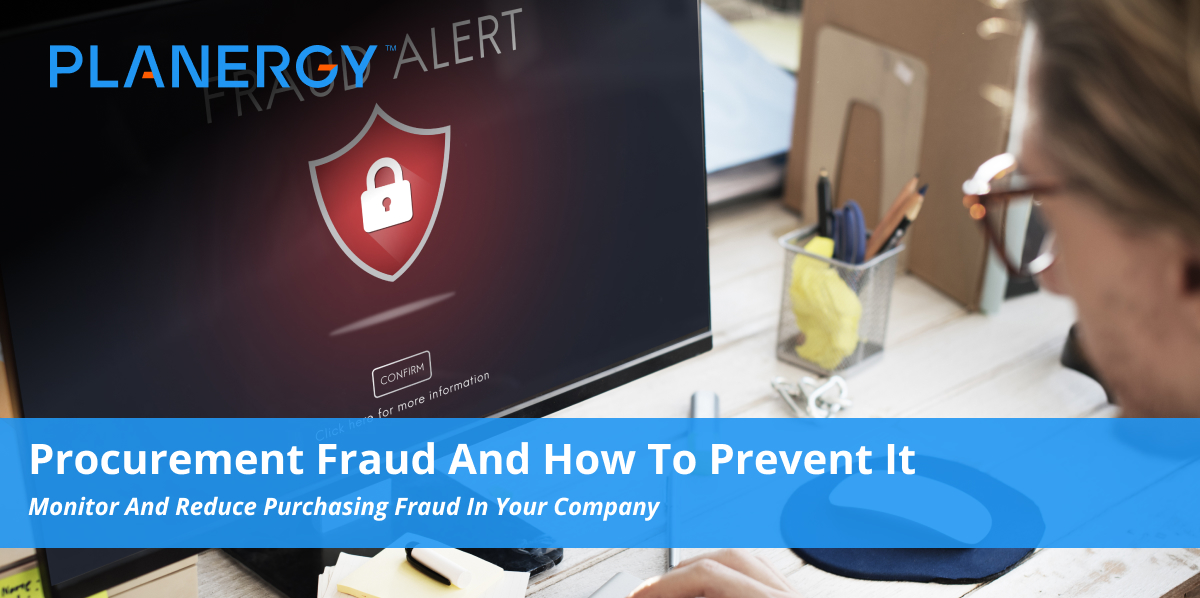Purchasing fraud refers to violations of the procurement process and can occur in public or private sector organizations.
The bidding process is particularly vulnerable to fraud and can be hard to detect, especially within large organizations with complex procurement operations.
Procurement is the acquisition of goods and services for an organization, and most of the business spend flows through the department.
The procurement department is responsible for negotiating contracts and purchasing all the goods and services required by the business.
Procurement practices should be monitored to reveal any red flags.
Reasons for committing procurement fraud include perceived opportunity without consequence coupled with greed, desperate need of money, quid pro quo for favors or opportunities, benefiting family members or friends, or even malicious sabotage.
Examples Of Purchasing Fraud
The goal of good procurement strategy is to purchase the best possible goods and services for the lowest possible price, while mitigating risks, building strong relationships with trusted vendor partners, and ensuring a smooth payment process that takes advantage of cost-saving opportunities.
Procurement fraud can take many forms, from embezzlement to overpriced goods.
Here are some of the most common fraudulent ways employees use access to scam organizations out of money.
Kickbacks
One of the most common scams out there involves payoffs, or kickbacks.
When goods and services are purchased, the supplier pays a kickback to the purchaser. The payoff might be in the form of a cash payment, favors, influence, or some other form of bribery.
In order to secure a kickback, the procurement manager may approve an unqualified supplier, purchase unnecessary goods or services, or corrupt the bidding process by excluding preferred vendors.
Another common tactic is to write the item specifications in such a way that only one bidder can qualify.
In a high-profile case just a few years ago the U.S. Department of Justice (DOJ) uncovered a scheme to pay hundreds of thousands of dollars in kickbacks to a procurement official at a subsidiary of the Boeing Company.
A metal company, A&A Fabrication and Polishing, Inc., supplied raw materials to BSIS, which supplies satellites and satellite parts to NASA, the Department of Defense, the National Reconnaissance Office and the U.S. Air Force.
The subcontractor paid bribes to a Boeing procurement officer in exchange for insider information to gain a competitive advantage.
When Boeing discovered unacceptable quality and performance issues and canceled the contract, the company created a shell company and won a new contract using the same fraudulent scheme.
Deals based on bribery are rarely advantageous for the purchasing organization. The supplier may overcharge or provide inferior product to recoup the bribe.
Even if the product is acceptable and reasonably price, the company loses the advantages of competitive bidding.
Conflict of Interest
Another common fraud scenario involves an undisclosed relationship with a company placing bids.
For example, the person who has final approval on the bidding process might own stock in the winning company, or be related in some way to the company or its shareholders.
Since the employee profits indirectly from the transaction, his interest lies in making the most advantageous deal for the supplier, which usually means a bad deal for the organization paying his salary.
In a conflict of interest fraud scheme, which the IRS deemed money laundering, Sean James Hager was employed by Velocity Electronics, where he was responsible for purchasing computer parts for resale to Dell.
Without disclosing the relationship, Hager bought the parts from a company he owned, Echt Electronics, and sold them to Velocity at inflated prices, scamming the company out of more than $1 million in profits.
Because procurement is a complex operation involving large sums of money and multiple contractors, it is highly vulnerable to fraudulent schemes.
Fake Companies/Orders
One of the most egregious and easily spotted procurement fraud schemes is simply gaming the system by submitting an order to a shell company and invoicing for product never received.
While it may seem impossible for this type fraud scheme to work, it can be easily accomplished in organizations with decentralized purchasing and disorganized process, especially where there is no procurement software designed to verify orders from purchase order though delivery, invoice, and payment.
In 2016, former Samsung America Director John Y. Lee plead guilty to creating a fictitious company and a complex trail of false financial documents, including invoices, purchase orders and payment applications for services that were never provided to Samsung.
He admitted to defrauding the company for between $1 million and $2.5 million between 2002 and 2007.
In order to process fake or fraudulent orders under company radar, an employee might make a series of small orders that do not require formal bidding or approval processing.
Contract approval thresholds may be triggered by a certain type of purchase or by exceeding a set amount.
By making fake orders for expected items small enough to bypass the approval requirement process, an employee can successfully pull off fraud, at least for a while.
Fraudulent Invoicing
Purchasing fraud is not always internal. Suppliers may invoice for inventory items not delivered, submit duplicate invoices, charge more than the negotiated contract amount, substitute lower quality materials, or charge for work that was never performed.
In a fraud case involving lower quality materials, William B. Aossey, Jr., the founder of Midamar Corporation, a halal food distribution company, was fined nearly a million dollars and sentenced to two years in prison.
Midamar falsified labels on beef packages in order to sell beef from low quality unapproved slaughterhouses as more expensive halal meat.
Collusive Bidding, or Bid Rigging
A group of suppliers have been known to conspire to artificially inflate prices during the bid process.
Bid rigging is a situation where a group of suppliers submits high bids in order to benefit a specific bidder.
Generally in this scenario, the losing competitors subcontract to the winning bidder, and they all profit from inflating the contract price.
The “Buffalo Billion” case was a classic example of bid rigging. When working on a government project to revitalize an area in upstate New York, lobbyist Todd Howe wrote language into the bidding process that would exclude any bidder other than LPCiminelli and Cor Development.
One blatantly biased requirement for contracting companies specified that only construction companies based in Buffalo with 50 years’ experience could qualify for the project, a requirement only the chosen company could meet.
While this requirement was quashed by officials on the project, it served as evidence to help convict Howe and co-conspirators.
Warning Signs of Bid Rigging
Here are the warning signs of bid rigging:
- The winning bid is significantly higher than expected based on estimates, company price lists, or previous contracts.
- Winning bidders from the same group rotate by job, type of work or location.
- Losing bidders on the same project are hired as subcontractors.
- Unusual bid patterns; similar high bids with one lower outlier, similar round numbers.
- Incomplete or sloppy bids, identical bids from different companies.
How To Monitor Purchasing Fraud
The primary weapon in any fraud prevention toolbox is procurement software.
Discerning patterns and trends can be difficult for humans, something software can handle with ease and in seconds.
Custom reports can be established to flag anomalous spending and establish and audit trail for three-way matching between purchase order, delivery slip, and invoice to ensure that the company pays only verified invoices, and no duplicate invoices are paid.
A comprehensive procurement program can monitor compliance issues, store current price lists for comparison, and keep track of vetted supplier information.
Spotting fraud doesn’t always take certified fraud examiners. Fraud schemes can often be spotted by unexpected employee behavior, including:
Lack of concern about quality standards. If the quality of goods and services is called into question and the procurement officer ignores or excuses the complaint, there may be a problem.
If invoices reflect significantly higher prices over negotiated contract prices, previous contracts, or industry standards, the contract may not be legitimate.
Using the same supplier and refusing to consider other bids. If the procurement manager defends a supplier who is clearly not meeting company standards or competitive pricing, consider hiring a fraud examiner for a contract audit.
Limiting communications with a preferred supplier. A single point of contact with a supplier is suspicious and may indicate a shady relationship.
Plans To Reduce Employee Purchasing Fraud
Minimizing fraud risk is a function of good procurement strategy. Large companies should include the possibility of procurement fraud on their risk assessment and plan to put fraud detection measures and fraud prevention policies in place.
Centralized procurement with well-defined processes leave less room for fraud. Procurement protocols should require checks and balances, with more than one manager required to sign off on big purchases.
The manager who orders product should not be the only person required to approve.
Management and employees should be trained and encouraged to watch for red flags.
Fraud prevention programs carried out by compliance officers can greatly improve the chances of catching corruption schemes.
Implement three-way matching system to verify invoices before payment.
Bid terms and acceptance requirements should be clearly defined and enforced.
Ensure vendor due diligence is carried out during any vendor approval process.
Suppliers should be thoroughly vetted and verified by at least two people, and kept in a supplier database with preferred suppliers identified.
When fraud is suspected, certified fraud examiners, as registered with the Association of Certified Fraud Examiners (ACFE), should compare key employee records with preferred suppliers, looking for connections, such as phone numbers, addresses, or bank accounts.
These would be some of the red flags for conflicts of interest they would look to identify.
Spend analysis reports should be run regularly to spot excessive or maverick spending.
Purchasing fraud can and does happen to the biggest companies on the planet, and several government examples are legendary.
The key to prevention is understanding the data, the changes in market pricing, and purchasing patterns. All functions made easier by digital procurement systems.




